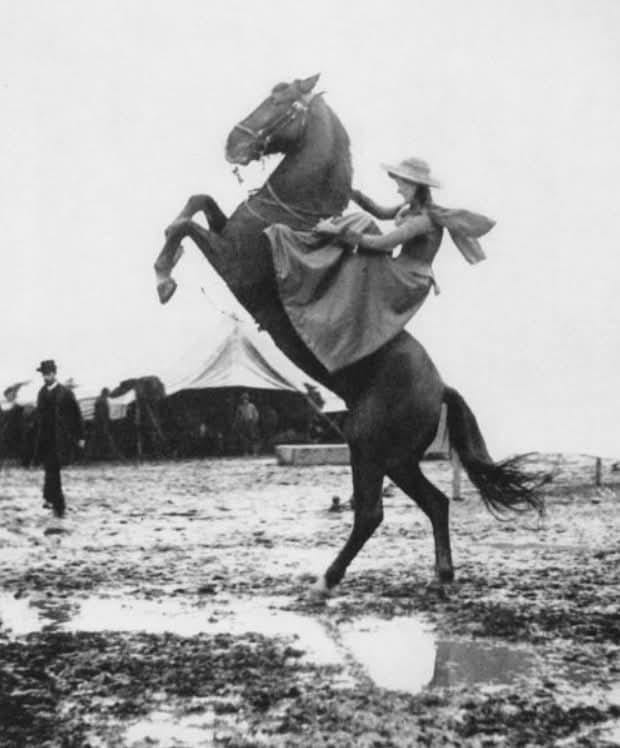|
|
|
Source A
A still from a 1930s film showing a re-enactment/ interpretation of an attack on a Wagon Train.
The last Apache Warrior, Geronimo, died in 1909, so the 'Wild West' was still very much a part of the culture of my childhood in the 1950s. We played 'cowboys and indians' (the boys made the girls play the 'Indians' so they could be on the 'winning' side), I read about 'Indian' massacres in my Hotspur comic and – on those boring Sunday afternoons when I was not allowed to go out to play – there was usually a black-and-white 'western' on the TV. Source A shows a typical scene from one of those old movies. The stories were fairly much standard: a handsome hero, a fragile heroine, a slimy villain, a dangerous wagon train journey attacked by 'Indians', and the cavalry arriving at the last minute to save the day. I can remember questioning at the time how ill-judged those attacks were, riding round in circles whooping ... and waiting to be shot. The child me did not realise that EVERYTHING he was being told about the events of that time was racist and factually incorrect.
A Note about NamesThere is considerable doubt about what name to use for the people who inhabited the north American continent (which they call 'Turtle Island') before the Europeans came. Most living Indigenous People prefer to be named by their nation/tribe, but sometimes it is necessary to use a collective noun. In such case:
The problem with ALL these terms is that they are names GIVEN to the Indigenous Peoples by their conquerors/ colonisers, and therefore "oppressive, counterfeit identities" which have "contributed greatly to the maginalisation of First Nations peoples" (Sierra Adadre, 2005).. Generally, if you use 'Indian' or 'Native American', you are not going to offend most Indigenous People. The most respectful term, however, imho, is 'Indigenous Nations', but both 'Indian' and 'Native American' are used in your AQA specification.
|
Annie Oakley was the most amazing women; in this photo from c.1890, she controls a rearing horse whilst riding side-saddle.
Did You KnowUntil the Second World War, many of the actors, most of the stuntmen & extras – and indeed many of the props (e.g. wagons) used in the films – were from the 'Wild West', having moved to Hollywood for a job when the real 'Wild West' came to an end.
Consider:On Youtube, watch this clip from the 1963 film Wagon Train. Imagine for the moment that this was the ONLY source on the American West. 1. Make notes on how the film clip portrays: 2. Make notes on the moral culture portrayed in the film. 3. Use what you have noticed to write 250 words on: 'Wagon Train; a 1963 interpretation of the American West'. Finish with a paragraph about how valid this interpretation is likely to be, given its provenance and intentions.
|
|
| |

